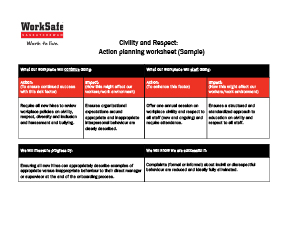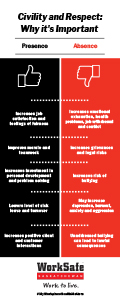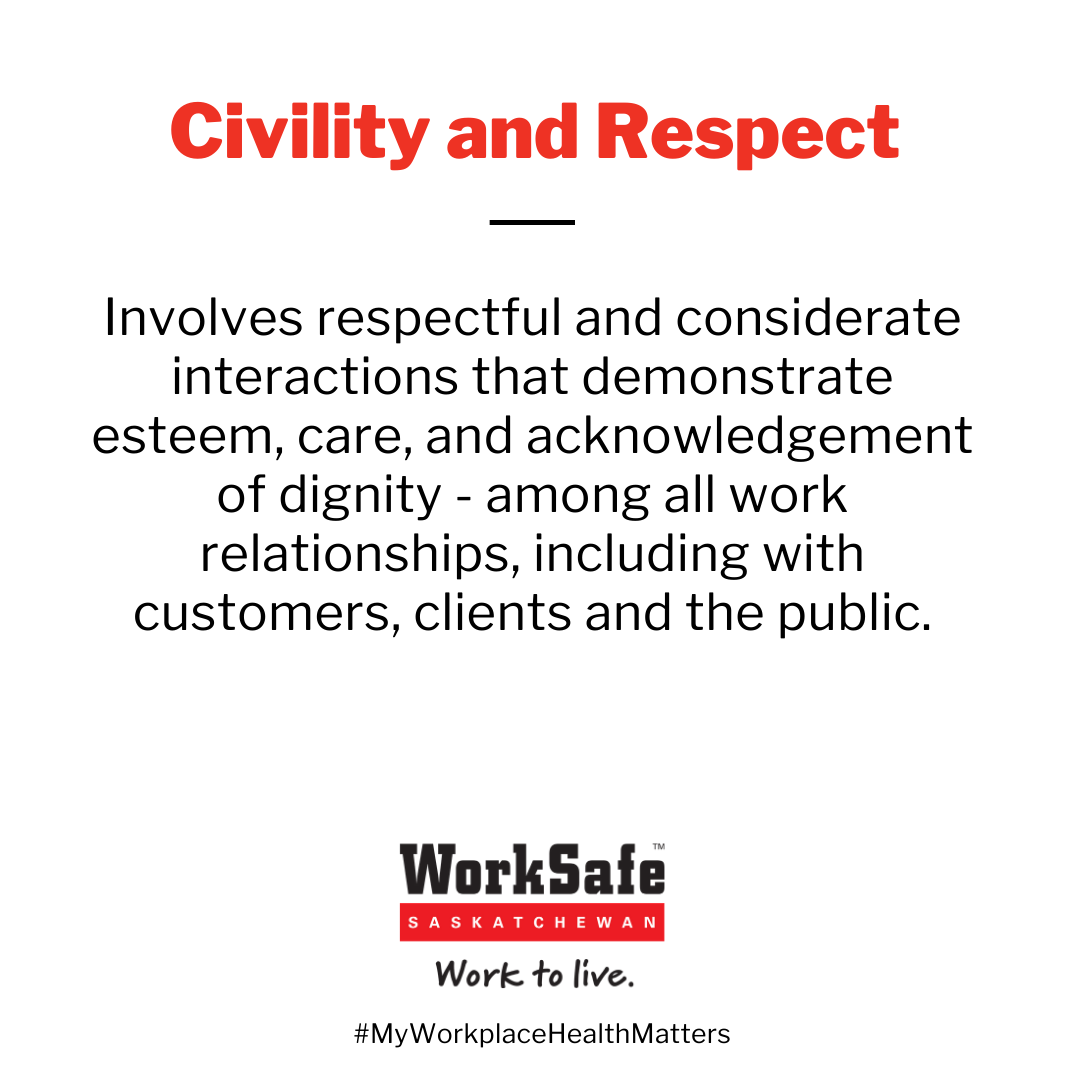 Civility and respect
Civility and respect
Involves respectful and considerate interactions that demonstrate esteem, care and acknowledgement of dignity among all work relationships, including with customers, clients and the public.
“One of the most sincere forms of respect is actually listening to what another has to say.” – Bryant H. McGill
Overview
What is civility and respect?
Civility and respect is present in a work environment where workers are respectful and considerate in their interactions with one another, as well as with customers, clients and the public. Civility and respect are based on demonstrating respect, care and consideration for others, and acknowledging their dignity.
An organization with good civility and respect would be able to state that:
- People treat each other with respect and consideration in the workplace.
- The organization effectively handles conflicts between stakeholders (workers, customers, clients, members of the public, suppliers, etc.).
- Workers from all backgrounds are treated fairly in the workplace.
- The organization has effective ways of addressing inappropriate behaviour by customers or clients.
FAQs
Action
Next steps: Ensuring civility and respect in the work environment
Civility and Respect is psychosocial factor 4 from CAN/CSA-Z1003-13/BNQ 9700-803/2013 – Psychological Health and Safety in the Workplace. Retrieved from: https://www.csagroup.org/article/cancsa-z1003-13-bnq-9700-803-2013-r2018/. See also Guarding Minds at Work (Samra et al.): Retrieved from https://www.guardingmindsatwork.ca/resources.




